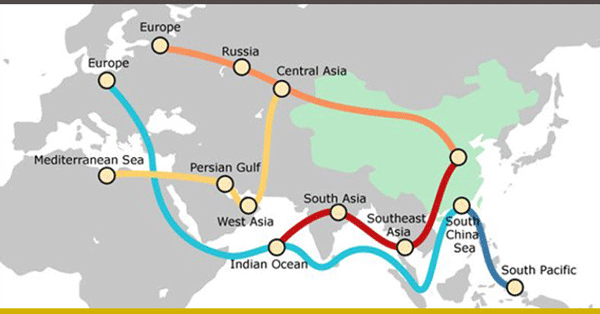New Silk Road to boost China’s trade
By viji Sunday, 13 December 2015 10:07 AM

Initiative to bring in $2.5 trillion to China in decade
13 December 2015
Abu Dhabi: Launched by Chinese President Xi Jinping in late 2013, the “One Belt, One Road” initiative aims to re-establish the old Silk Road trade route both on land and sea to boost trade and infrastructure across Eurasia.
The initiative which stretches from Hungary to Indonesia, essentially connects Asia to Western Europe (by land), and to East Africa (by sea), spanning infrastructure projects among 64 countries.
Also called the “New Silk Road,” the scheme includes countries on the original Silk Road through Central Asia, West Asia, the Middle East, and Europe. It is set to boost the usage of the yuan, emphasising the Chinese currency’s role as a vehicle to raise capital globally to fund railways, highways, ports, airports and other infrastructure projects.
The initiative will add $2.5 trillion (Dh9.18 trillion) to China’s trade in the next decade – more than the value of its exports in 2013 when it was the world’s top exporter, Reuters reported.
Auditing firm, PriceWaterhouseCoopers, estimated that over $250 billion worth of projects, from railways to power plants, have been contracted since the initiative was announced in 2013.
Earlier this year, the Chinese government rolled out fresh guidance aimed at supporting the Silk Road initiative, announcing it will speed up approvals for major construction projects and strengthen bank credit policies for investments in those regions.
Under the “One Belt, One Road” initiative, China is aiming to extend its influence and to support local industries, bolstering demand in the country’s infrastructure sector as concerns mount over economic growth.
- With inputs from agencies




























Add new comment